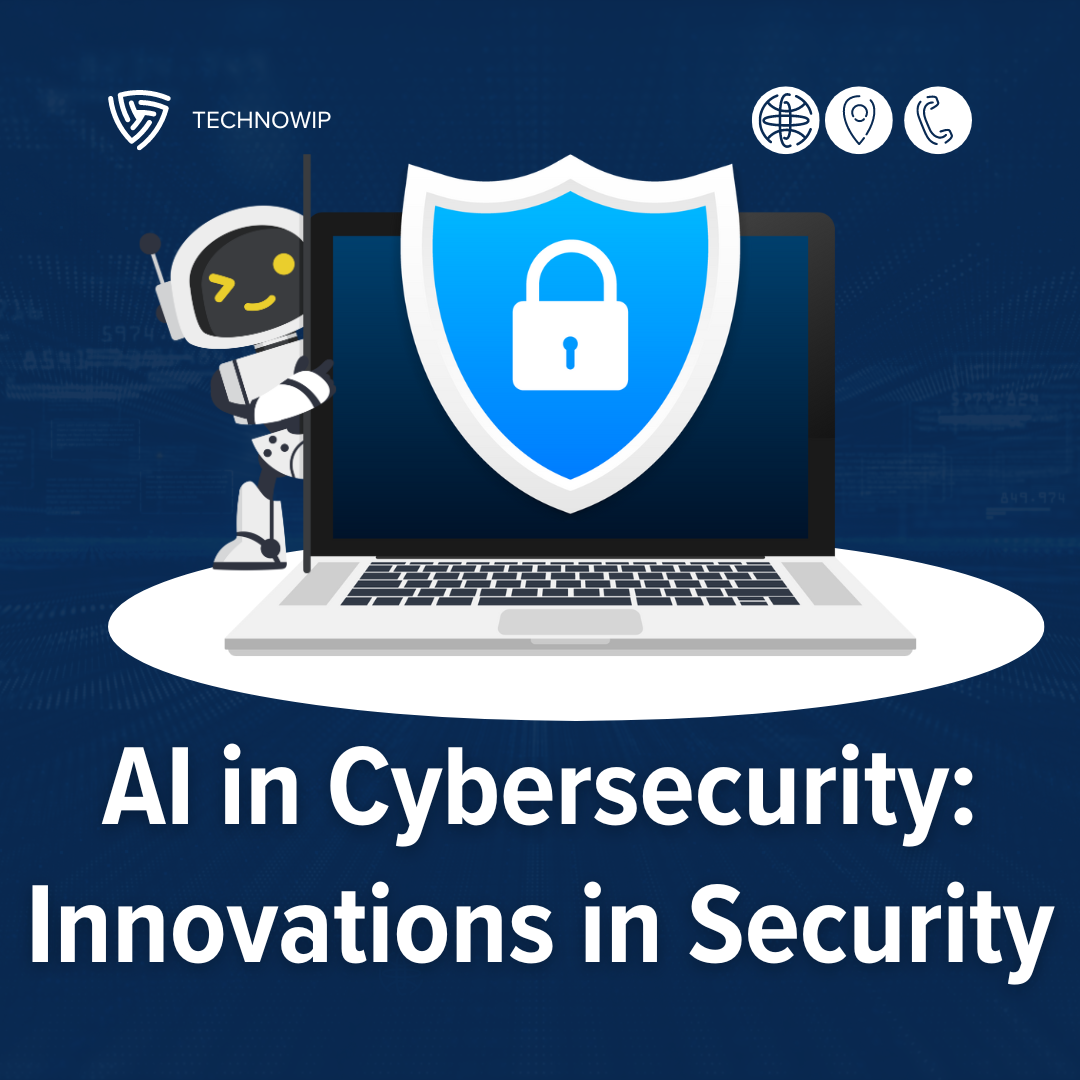Introduction : AI in Cybersecurity
Cyber threats are evolving quickly, leaving traditional defense methods struggling to keep up. Artificial Intelligence (AI) has now emerged as a pivotal player in cybersecurity transformation; in this blog we’ll look at how AI in Cybersecurity is revolutionising security through real world case studies as we demonstrate why this solution can address some of today’s toughest cyber challenges.
The Problem: Why Traditional Security Measures Fall Short
- Cyberattacks are Growing in Frequency and Complexity
Attacks such as data breaches, ransomware and advanced persistent threats (APTs) have become all too frequent in modern society. According to IBM’s 2023 Cost of Data Breach Report, data breach incidents now typically cost an average of $4.45 Million dollars to restore data after their discovery.
- Human Error in Cybersecurity
Human involvement in threat detection often results in delays and mistakes; according to one Verizon report, 8 out of every 10 breaches involve human error – underscoring its limitations as an anti-hacking measure.
- Cybersecurity Skills Gap
According to the 2022 (ISC)2 Cybersecurity Workforce Study, an estimated global shortage of professionals stands at 3.4 million; as businesses without enough trained security specialists are left vulnerable against threats.
Agitation: The Challenges of Cybersecurity Without AI
1.Overwhelming Volume of Cyber Threats
Security teams handle thousands of alerts each day, many of them false positives, according to Ponemon Institute studies. Up to 25% of alerts go ignored due to being overwhelmed by notifications.
2.Slow Response Times
On average, it takes an estimated 280 days for companies to detect and contain breaches, giving attackers ample opportunity to do damage before being identified as such by security teams. This delay only compounded financial and reputational costs further for organizations.
3.Reactive Approaches Lead to Damage
Traditional cybersecurity methods are reactive; they address threats only after they have already happened and leave organizations vulnerable to significant harm.
The Solution: How AI is Transforming Cybersecurity
1.Real-Time Threat Detection with AI
AI-powered systems can analyze data in real time to detect threats in an instantaneous fashion. Darktrace’s AI security platform utilizes machine learning technology to quickly spot network anomalies as soon as they arise, offering immediate protection from possible danger.
“AI has long fascinated me as it provides real-time threat detection that offers invaluable protection in today’s digital landscape.
2.Automation of Routine Security Tasks
AI can streamline repetitive security tasks like vulnerability scanning and patch management, freeing human experts to focus on more intricate issues. Microsoft Azure Sentinel enabled one company to automate up to 80% of their security tasks thereby greatly increasing efficiency.
3.Predictive Threat Detection
AI goes beyond simply reacting to threats; it predicts them by analyzing historical data. Cylance, an AI company specializing in malware prevention, prevented 99.5% of infections by anticipating attacks prior to them occurring – helping organizations stay one step ahead of cybercriminals.
As someone who takes proactive measures seriously, AI’s predictive abilities offer me great comfort. Knowing it can identify threats gives me peace of mind.”
4.Reducing False Positives
False positives clutter security systems and waste time. Artificial Intelligence helps alleviate this burden by learning what constitutes normal behavior within systems; Google’s AI platform reduced false positives by half so security teams could focus more effectively on real threats.
5.AI and Behavioral Analysis
AI can monitor user behavior and detect deviations that indicate potential insider threats, helping Forcepoint identify suspicious activities before any attacks can escalate further.
“Artificial Intelligence and behavioral analysis give me greater peace of mind. Knowing that any suspicious activities will be monitored real-time makes me feel safer for both my data and systems.”
6.AI-Driven Phishing Detection
Phishing remains one of the greatest cyber security risks, yet AI’s ability to analyze emails, websites, and communications makes it particularly efficient at detecting potential phishing attempts. According to Symantec reports AI-powered systems were responsible for cutting successful phishing attacks by 40%.
7.AI for Endpoint Security
Artificial Intelligence helps secure devices like smartphones, laptops and IoT devices. CrowdStrike – an AI-driven endpoint security platform – managed to identify and block 96% of malware without human involvement.
“AI’s ability to protect endpoints is especially comforting. Knowing that AI can prevent malware infections on my devices brings great peace of mind.”
8.Automating Incident Response with AI
AI can automate incident response processes and reduce response times from attacks by up to 70% – effectively mitigating their impacts and mitigating recovery times for breach incidents. IBM Watson cybersecurity provides one such example where this has proven its worth by speedily recovering from threats like ransomware attacks in just 24 hours after initial detection and containment.
9.Adversarial AI: The New Challenge
AI can be an extremely valuable defense mechanism; however, attackers have also turned it against themselves to create more sophisticated threats. Security professionals need to stay on guard as AI arms races intensify in order to maintain an edge and stay one step ahead.
“Adversarial AI helped me realize how AI is both an asset and liability; therefore it serves as a reminder that we must constantly innovate to stay one step ahead of cybercriminals.
10.Balancing AI Security with Data Privacy
As organizations implement AI-powered cybersecurity systems, it’s critical that they strike a balance between security and privacy. AI tools must comply with regulations like GDPR to guarantee that no personal information is sacrificed in favor of enhanced protection.
“Data privacy has long been my top concern and, while AI helps strengthen security measures, I consider it equally essential that any new AI respect privacy regulations. Balancing priorities between them is paramount.”
Top AI-Driven Cybersecurity Trends to Watch
- AI in Threat Detection
AI-powered tools quickly identify and respond to cyber attacks in real time, automating responses while improving accuracy in threat management.
- Generative AI in Phishing and Deepfakes
Cybercriminals utilizing generative AI for sophisticated phishing and deepfake attacks is becoming an increasing tactic used by cyber criminals to bypass traditional security systems’ detection methods.
- AI for Cloud Security
It plays an integral part of cloud security by monitoring cloud activity, detecting unapproved access attempts and safeguarding sensitive data.
- AI and Zero Trust Models
Artificial intelligence plays a pivotal role in Zero Trust security by constantly verifying users and devices – especially important when protecting remote work environments.
- Quantum Computing and AI
AI can develop quantum-resistant algorithms and anticipate cyberattacks due to quantum effects – two increasingly pressing concerns for future encryption standards.
- AI in Threat Hunting
Artificial Intelligence-powered threat hunting automates threat discovery by uncovering vulnerabilities and improving cyber resilience.
- Adversarial AI
Cybercriminals exploit adversarial AI to compromise security systems, forcing defenders of these defenses to come up with smarter AI countermeasures in response.
- AI for Insider Threat Detection
Artificial Intelligence can help detect insider threats by monitoring any deviations in user behaviour and noting any abnormalities that emerge over time.
- AI in Endpoint Security
It can secure endpoint devices – like laptops and IoT devices – against malware attacks as well as unauthorizaed access.
- AI and Cyber Risk in the Boardroom
Artificial Intelligence plays an increasingly essential role in risk management and cybersecurity strategies at an executive level due to new regulations.
Conclusion: AI in Cybersecurity
AI’s capabilities of quickly detecting, preventing, and responding to threats faster than human teams is revolutionizing cybersecurity. From automating tasks to reducing false positives – AI is already making waves in real-world applications; however its rise highlights the necessity of continuous improvements to security measures.
As AI technology develops further, its role in cybersecurity will only expand. Organizations who utilize AI-powered solutions today will be better prepared to face tomorrow’s threats; by combining innovation with human expertise AI technology offers organizations an effective defense against the ever-evolving cyberthreat landscape.
FAQS AI in Cybersecurity
1.How does AI improve threat detection in cybersecurity?
Artificial Intelligence can significantly enhance threat detection by rapidly processing massive volumes of data in real time and quickly identifying patterns or potential threats faster than humans can. AI systems can identify any anomalous or unusual behavior which helps detect attacks before they cause significant harm, with companies like Darktrace and Cylance using AI-powered systems as part of their threat detection capabilities.
2.Can AI completely eliminate the need for human cybersecurity professionals?
No, AI cannot replace human professionals entirely. While AI automates routine tasks and increases efficiency, humans remain essential when making critical decisions and responding to complex threats or cyberattacks. AI complements human expertise by handling repetitive tasks efficiently while offering real-time insights that allow professionals to focus more strategically.
3.What role does AI play in reducing false positives?
AI can reduce false positives by continuously learning from data and improving its accuracy over time. Traditional systems often generate too many false positives for security teams to keep up with; AI’s ability to distinguish normal from suspicious activities dramatically lowers unnecessary alerts so security teams can concentrate their attention on real threats instead.
4.How does AI predict cyber threats before they happen?
AI uses predictive analytics by examining historical data and recognizing patterns which indicate potential threats. AI learns from past attacks to anticipate when an attack might take place and take preventive steps against any attacks that might happen; Cylance is one company which utilizes this technique in their defense efforts by foreseeing threats prior to them manifesting themselves.
5.What is adversarial AI, and why is it a concern?
Adversarial AI refers to the use of artificial intelligence by attackers to develop more sophisticated malware, phishing schemes or cyber threats. Cybercriminals leverage AI as an advantage against security systems; creating an arms race between attackers and defenders which necessitates organizations continuously improving their AI-powered defenses in order to stay ahead of evolving threats.
6.How does AI help in detecting phishing attacks?
AI can quickly detect phishing attacks by scanning email content, websites and messages for suspicious patterns and then matching those patterns against known attack signatures – Symantec’s AI tools were found to reduce successful phishing attempts by 40% within organizations using them!
7.Can AI automate incident response in cybersecurity?
Yes, artificial intelligence (AI) can automate incident response by recognizing, analyzing, and responding to threats without human interaction. AI-powered incident response solutions like IBM Watson automate the incident response process significantly reducing recovery times by as much as 70%.
8.How does AI contribute to endpoint security?
AI can boost endpoint security by continuously scanning devices like laptops, smartphones and IoT devices for potential threats such as malware or suspicious behavior in real-time – for instance CrowdStrike provides endpoint protection without needing constant human oversight.
9.Does AI in cybersecurity respect data privacy regulations?
AI-powered cybersecurity systems can be configured to adhere to data protection regulations such as GDPR. Organizations should take precautionary steps in setting up their AI solutions responsibly in order to maintain high levels of protection without jeopardizing user privacy or risking damage to security levels.
10.How is AI being used to combat insider threats?
AI can monitor user behaviors to spot deviations from normal activity that might signal an insider threat, providing fast detection for suspicious actions such as unauthorised access of sensitive data by employees and prevent potential breaches caused by insider threats. Forcepoint uses AI behavioral analysis for such purposes – one company employing this strategy is their security service offering!

